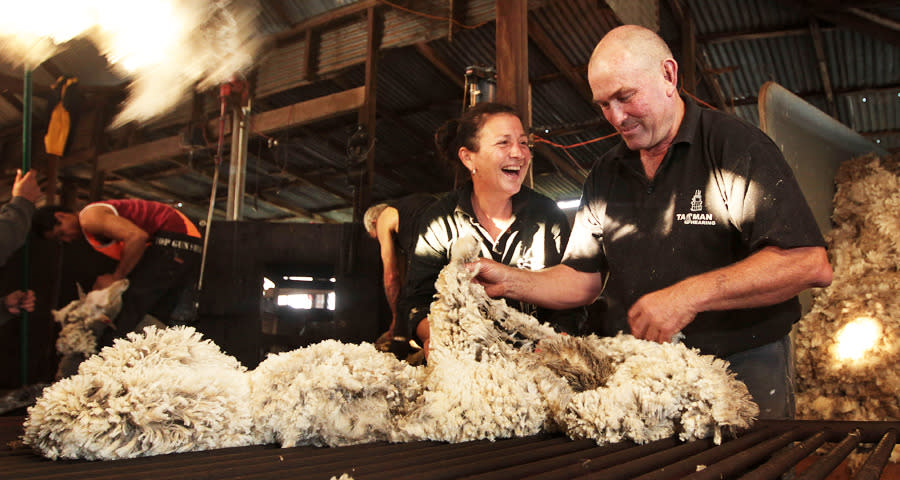Prices force woolly thinking

After four consecutive weeks of strong gains, producers are contemplating their wool selling strategies as wool prices surged to their highest level since February 2012.
Driven particularly by strong demand from China, the AWEX Eastern Market Indicator jumped by 69 Australian cents to close at 1241c/kg clean.
Importantly, the EMI also rose in US terms by a similar 54 cents (to US990c/kg), meaning the rises enjoyed by Australian wool growers were not just down to currency movements.
Elders WA zone wool manager Danny Burkett welcomed the rise, but cautioned history has proven these strong surges are not often sustainable.
He said the key 21 micron indicator was approaching previous resistance levels over recent years within 20-30 US cents of current prices.
"The market often enters a period of consolidation after such a significant rise as what we have seen in the past four weeks," Mr Burkett said.
"At the moment we have a positive scenario where the pipeline is fairly void, forcing exporters to scramble for quantity.
"Once that situation is rectified, we could see prices consolidate.
"I would love to see the EMI remain at this price for 12 months so every grower can participate - but history shows that is unlikely."
Mr Burkett said further significant rises would signify an overheated market situation.
He said the current high wool price was welcomed by growers, who were being realistic about the outlook.
The rise in the wool market would likely lead farmers to drag wool off farm and out of hold in the near term.
"It has initiated forward sales into next year for people shearing through September, October and November and beyond. We will continue to see more action on the forward market," he said.
The increase is providing an opportunity for growers such as Steve and Rebecca Thompson of Boyup Brook, who last week shore 2000 lambs.
The Thompsons, who also run the Tasman shearing contract business, normally hang on to wool shorn at this time of year to send to Fremantle in January alongside wool from their main flock.
However, the recently-shorn wool will be sent to Fremantle for testing within the next couple of weeks, in the hope they can take advantage of current strong prices.
"Normally I don't sell wool from this time of year immediately. Rather I send the lot up together in January and it is sold in the second sale of the season," Mr Thompson said. "But going on what is happening with wool prices currently, I will send this wool up now for testing to see what it is worth.
"If we're still happy with what the market is doing, we'll sell it for sure."
The Thompsons' May shearing program involved 1500 Dohne lambs (averaging 18 micron) and about 500 White Suffolk/Merino crossbred lambs (averaging 22.5 micron).
These lambs were also shorn last November, but were shorn again last week with wool at just 50-60mm, for animal health reasons.
"Shearing the lambs again at this time of year means they tend to eat more to keep their body temperature up," he said.
"As a result they grow their body mass quicker."
Mr Thompson said he did not feel particularly optimistic about the wool price long term, but welcomed the recent improvement.
"We look at wool as a part of our income. We value it and are really encouraged when it is doing well," he said.
He said an excellent start to the season around Boyup Brook provided further good news for local livestock producers.
"Sheep are in good nick and we have plenty of green feed at the moment," Mr Thompson said. "Hopefully we will get the forecast rain at the weekend which will keep us going, following on from 100mm of opening rains. It's as good a start as I can remember."


